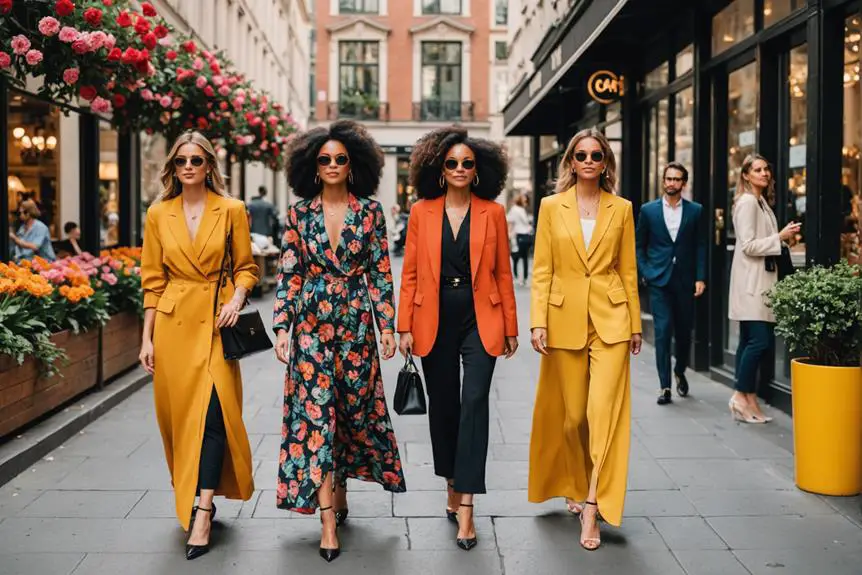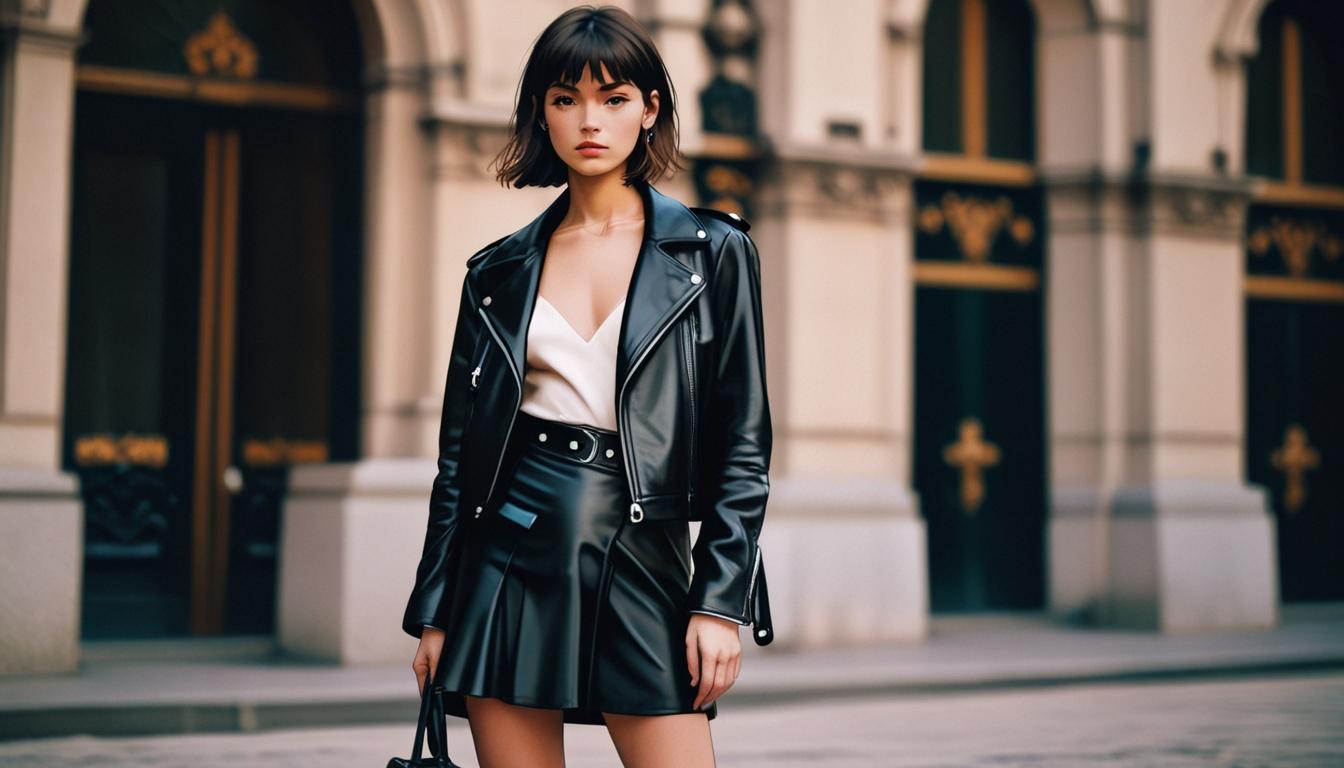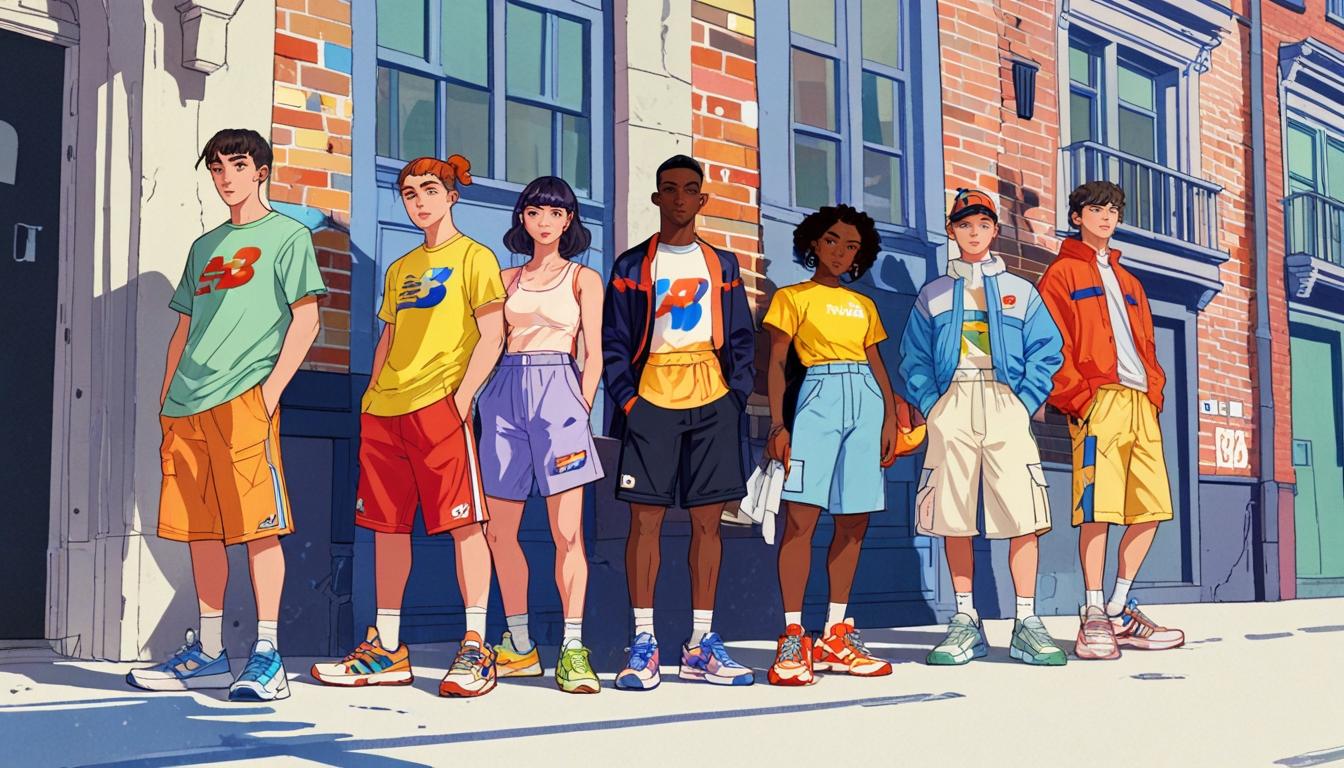What if the clothes you wore could speak volumes about your identity? In the 1960s, women's fashion did just that, transforming from conservative styles to bold expressions of freedom and individuality. Iconic pieces like the mini skirt and shift dress not only marked a shift in aesthetics but also mirrored the social currents of the time. As you explore the influential designers and cultural figures who shaped this vibrant landscape, you'll discover how these styles resonate with contemporary fashion movements today. What were the underlying forces driving these changes?
Historical Overview of 60s Fashion
The 1960s' fashion scene underwent a revolutionary transformation that mirrored the decade's social and cultural shifts. Women's clothing took a bold turn, reflecting the spirit of the times. You might've noticed how vibrant colors and geometric patterns popped up everywhere. This wasn't just fashion; it was a statement! With icons like Twiggy leading the charge, mini skirts, shift dresses, and knee-high boots became symbols of youthful rebellion and liberation. Can you imagine how liberating it felt to wear those styles?
The rise of the feminist movement also played a huge role in shaping women's clothing. Practical, comfortable pieces like pantsuits and tailored blazers challenged traditional gender norms. Suddenly, it wasn't just about looking pretty; it was about feeling empowered. And who doesn't want that? Plus, with designers like Mary Quant and André Courrèges pushing the envelope, synthetic fabrics like polyester made their way into your closets, offering new textures and affordability.
Music and pop culture heavily influenced what women wore. Psychedelic prints and vibrant colors became synonymous with the counterculture movement. Think about it—events like Woodstock inspired a whole new way of expressing yourself through fashion. Women's clothing in the 60s was more than just fabric; it was a canvas for change, creativity, and self-expression. So, next time you see a mini skirt or a bold print, remember, it's not just a trend—it's a piece of history!
Key Styles and Silhouettes
Mini skirts, shift dresses, and bell-bottoms defined the vibrant styles of 1960s women's fashion, each reflecting the decade's spirit of liberation and self-expression. You couldn't walk down the street without spotting someone rocking a mini skirt, showing off those legs and embracing a carefree attitude. The evolution of women's fashion during this time echoed a broader cultural shift, much like how Vivienne Westwood's designs challenged societal norms. Shift dresses, with their simple lines and comfy fit, let you dance through life while making a statement. And let's not forget about bell-bottoms! Those flared pants gave a nod to the groovy vibe of the time, perfect for twirling at a dance party.
But fashion didn't just stop there. The early 1900s saw women squeezed into corsets, emphasizing tiny waists and puffed sleeves, which feels so restrictive now, right? Fast forward to the 1920s, and you'll see women ditching those corsets for looser, more boyish silhouettes. The 1940s introduced practicality, with military-inspired colors and durable materials taking center stage due to wartime fabric shortages.
Popular Fabrics and Patterns
Exploring popular fabrics and patterns of the 60s reveals a vibrant tapestry of choices that defined the era's fashion landscape. You'll find that lightweight muslin was a go-to fabric, perfect for those hot summer days. It's breathable and easy to layer, making it a fantastic choice for any stylish outfit. Who doesn't love a comfy, breezy dress on a sunny day? Additionally, this decade saw a significant shift towards sustainable fashion practices, echoing the resurgence in interest since the 1990s as designers began to prioritize eco-friendly materials.
Faux leather also made waves during this time. It offered a chic, cruelty-free alternative to real leather, allowing you to rock skirts, dresses, and trousers without harming any animals. Plus, it's super easy to care for!
Knitted fabrics are another favorite. From cozy sweaters to form-fitting dresses, these styles keep you warm and fashionable during the cooler months. Talk about a win-win situation!
When it comes to patterns, floral and geometric designs were everywhere. They added a splash of color and personality to dresses, tops, and accessories. Seriously, who can resist a bold floral print?
Lastly, with the rise of sustainable fashion, you'll notice an increase in the use of recycled materials and organic cotton. This not only aligns with eco-conscious choices but also helps reduce environmental impact. So, you can look fabulous while feeling good about your choices!
In short, the popular fabrics and patterns of the 60s aren't just relics of the past—they're timeless elements that continue to inspire today's fashion world. How cool is that?
Influential Designers and Icons
Fashion in the 60s was shaped by a handful of visionary designers and iconic figures who pushed boundaries and redefined women's clothing. You can't talk about this era without mentioning Yves Saint Laurent, who made waves by introducing the tuxedo suit for women. This bold move didn't just change what women wore; it challenged gender norms and kicked off a whole new vibe of power dressing! Saint Laurent's innovations, such as the Trapeze Line, revolutionized women's fashion with new silhouettes that embodied freedom and confidence.
Then there's Christian Dior, whose "New Look" from 1947 still influenced trends in the 60s. With cinched waists and flowing skirts, he celebrated the female silhouette, bringing femininity back in style after the war. And let's not forget Coco Chanel, the queen of casual elegance. Her revolutionary little black dress from the 1920s continued to be a timeless staple, reminding us that chic doesn't have to be complicated.
Of course, the 60s weren't just about designers. Iconic models like Naomi Campbell and Kate Moss strutted their stuff on runways, becoming symbols of beauty and empowerment. Their presence changed fashion trends and inspired countless brand collaborations. Fashion was no longer just clothes; it became an expression of identity!
Cultural Impact and Legacy
As societal norms shifted in the 1960s, women's fashion became a powerful reflection of the cultural changes happening around the globe. You might remember that the previous decades laid an incredible foundation. Think about the 1920s, when flapper dresses symbolized newfound freedom, or the 1930s, when the Great Depression pushed women toward more practical, affordable styles. Even the 1940s had its wartime utility clothing, blending style with necessity. The influence of iconic brands like Ralph Lauren, which began with men's fashion and expanded to women's clothing, played a significant role in shaping modern styles and trends, emphasizing the importance of quality and luxury in everyday wear the legacy of Ralph Lauren.
Each era showcased a different style of clothing, revealing how women adapted to their circumstances. After the war, fabric choices shifted dramatically. Gone were the opulent materials of the early 1900s, replaced by accessible, durable options that matched women's evolving lives. Doesn't it make you wonder how these changes shaped everyday choices?
Accessories, too, reflect this evolution. Remember those intricate Victorian handbags? Fast forward to today, and you see more practical, stylish options that cater to modern needs. Isn't it fascinating how the style of clothing and accessories tell a story about women's roles and socio-economic conditions?
The cultural impact of women's fashion isn't just about looking good. It's about empowerment and expression. Each outfit you choose can connect you to history. So, next time you pick your clothes, think about the legacy behind them. What message are you sending? Fashion is more than fabric—it's a celebration of who you are and where you've come from!
Frequently Asked Questions
What Is a Women's Size S?
A women's size S typically aligns with numerical size 4 to 6 in the US. Understanding size standards helps you navigate clothing choices, ensuring a better fit based on brand-specific size charts you consult.
What Has Happened to M&S Clothing?
You've seen M&S Clothing's brand evolution as it adapts to trends, emphasizing quality and sustainability. The introduction of exclusive collections and a strong online presence shows their commitment to attracting a broader, younger audience.
What Is the SS Season in Fashion?
The SS season in fashion represents a vibrant time where you'll see seasonal trends like floral prints and pastel shades emerge. It's all about lighter fabrics that embrace warmth and outdoor activities, revitalizing your wardrobe.
What Does S CH Mean in Women's Clothing?
When you see "S CH," think of a puzzle piece fitting perfectly. It means "Small" and "China," highlighting size conversion differences. Always check size charts to verify your clothing fits just right.



